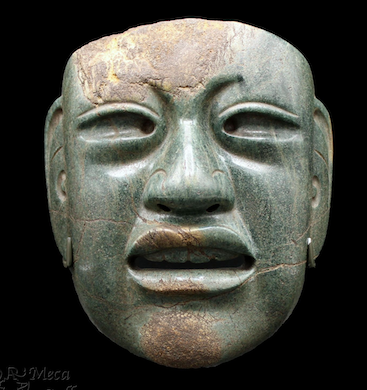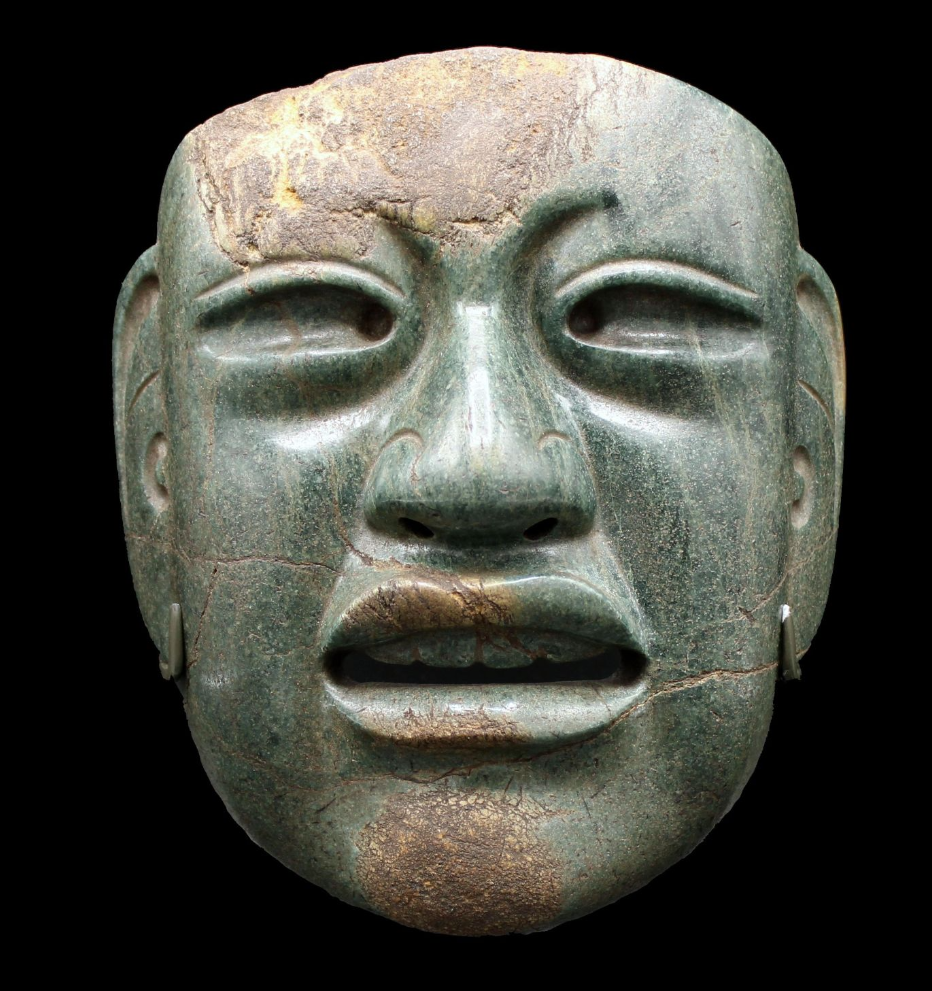
NEW YORK — The Olmec people are believed to be the earliest civilization in Central America, and they lived from about 1200 to 400 BCE in what is now Mexico. They were masters of stonework, and their mask sculptures rank among their most compelling artworks. Although some Olmec masks were worn over the face, most were jewelry pendants, while others were displayed and later entombed with the persons for whom they were made.
In the modern Western world, people wear masks to conceal their faces at masquerade balls or on Halloween, but in the ancient Mesoamerican culture, masks were meant to reveal one’s true inner self. “Masks worn by living people often showed their supernatural forms … Masks worn by deceased rulers preserved for eternity their human form,” according to the Dallas Museum of Art.
Much of Olmec art paid homage to various gods and deities such as those in charge of maize and rain. Masks were often carved of hard materials such as greenstone and jade, which was no small feat considering the primitive tools available to the sculptors at the time.
The almond-shaped eyes, wide and prominent nose and downturned mouth on a large Olmec jade mask (900-600 BCE) that brought $12,000 plus the buyer’s premium in September 2020 at AriMeca Gallery marks it as an image of an Olmec god. Cut from a vivid green jade, the mask is not wholly human in appearance but more of an idealized entity that exemplifies how the Olmec depicted deities and otherworldly beings. The mask sold in 2020 shows some iron corrosion to the surface, which suggests it was buried with iron ore mirrors, an Olmec burial practice associated with the elite. The lack of eyeholes indicates the mask was not worn over the face.
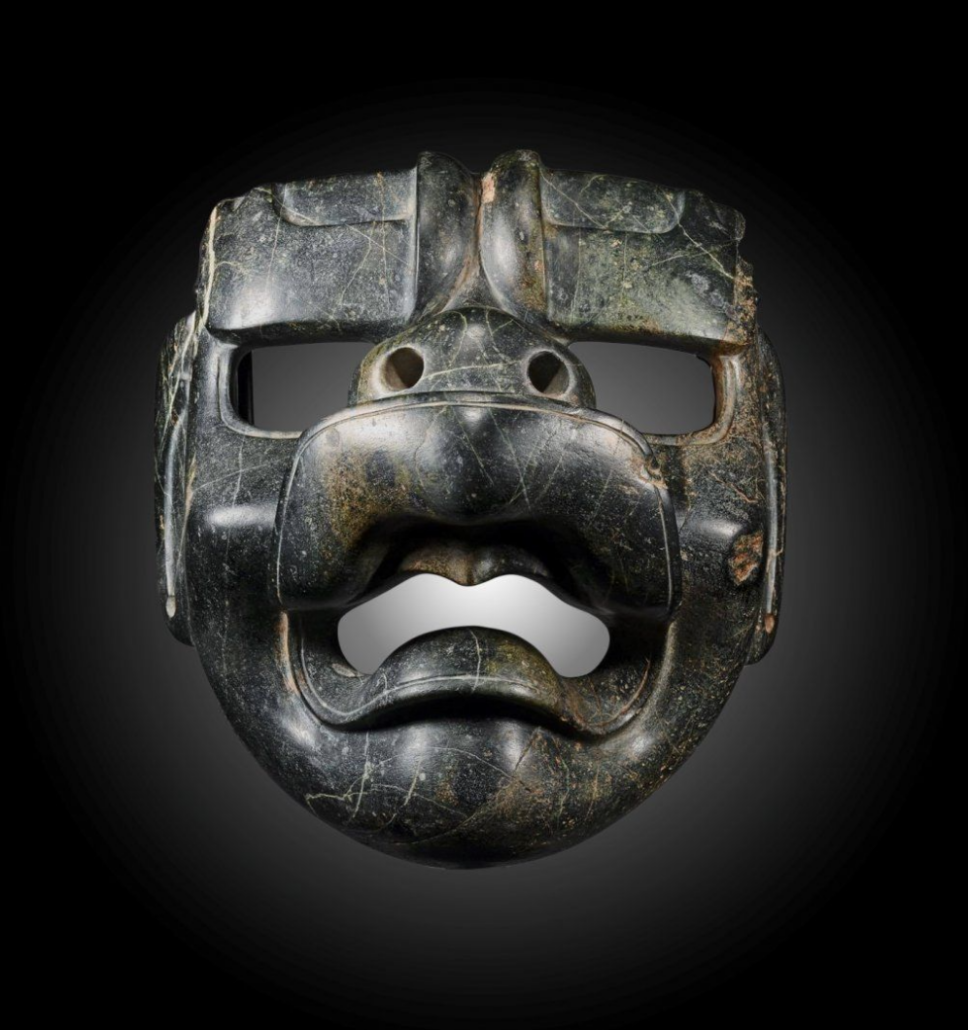
Some Olmec masks depict a jaguar or a were-jaguar, a creature that has traits of both humans and jaguars. It often resembles the image of a baby or young human with decidedly feline features, including fangs, almond-shaped eyes and a cleft in the head, such as in a pre-Columbian Olmec jaguar mask that sold for $250,000 plus the buyer’s premium in March 2018 at Minerva Gallery. The circa-300 BCE piece features a large were-jaguar mouth and flame eyebrows.
Rich, green, hard serpentine was a favorite stone of Olmec sculptors, though it might seem like an incongruous choice. In the hands of a skilled sculptor, however, these masks seem strikingly lifelike, with expertly carved details that make it vibrant and convincing. A circa-1500 to 500 BCE serpentine jaguar mask that sold for $24,000 plus the buyer’s premium in October 2017 at Artemis Gallery is very sophisticated in its carving, with smooth facial contours. It manages to perfectly blend naturalistic aesthetics and abstract interpretation.
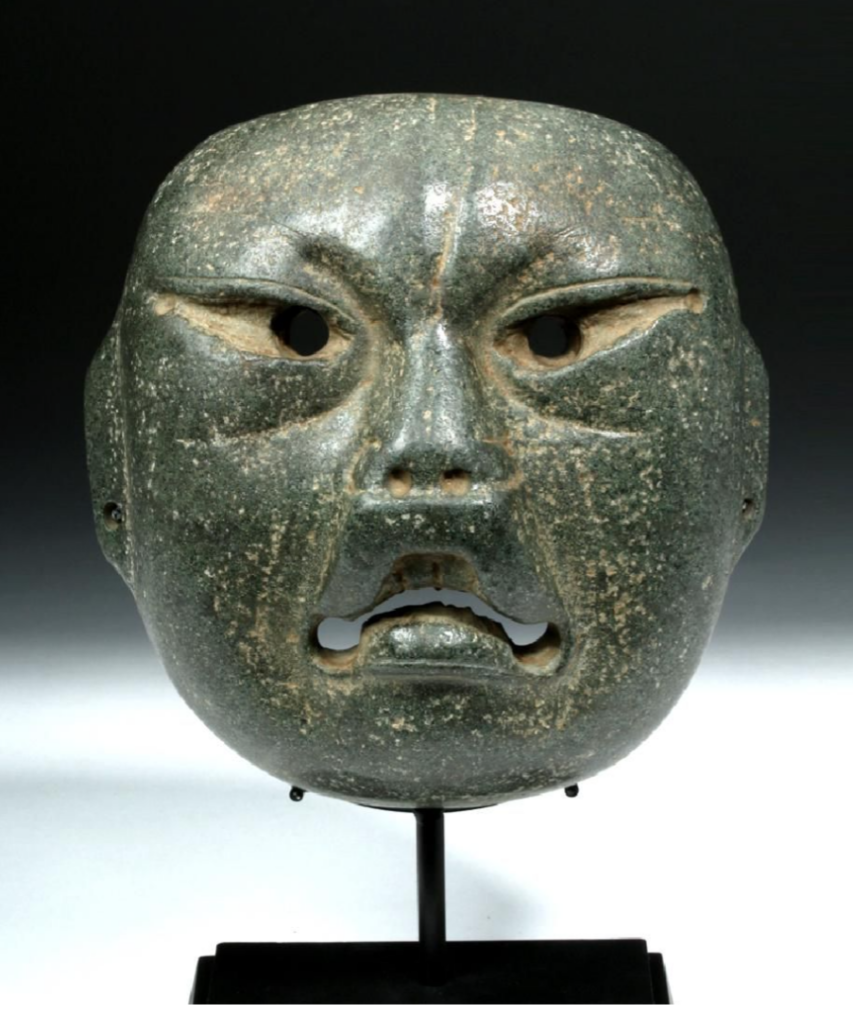
“This piece is expertly worked with graceful, subtle contours and displays signature Olmec traits, including jowly cheeks, a straight nose with delineated flaring nostrils, a downturned jaguar mouth with parted lips revealing incised teeth, puffy eyelids, and slanted eyes with drilled pupils/irises and corneal beds that may have contained inlays,” according to the catalog notes. The head was made noticeably misshapen in keeping with the Olmec tradition of wearing tight-fitting helmets that distorted the shape of the skull.

Another standout mask is a circa 300-500 BCE example that realized $28,000 plus the buyer’s premium at Heritage Auctions in June 2019. Made in green serpentine, it has staining from a red pigment that is most likely cinnabar. “The life-size mask with finely carved facial features in high relief, portraying a youthful, lively countenance with nasolabial (smile lines) to sides of nose and mouth … ,” reads the catalog description.
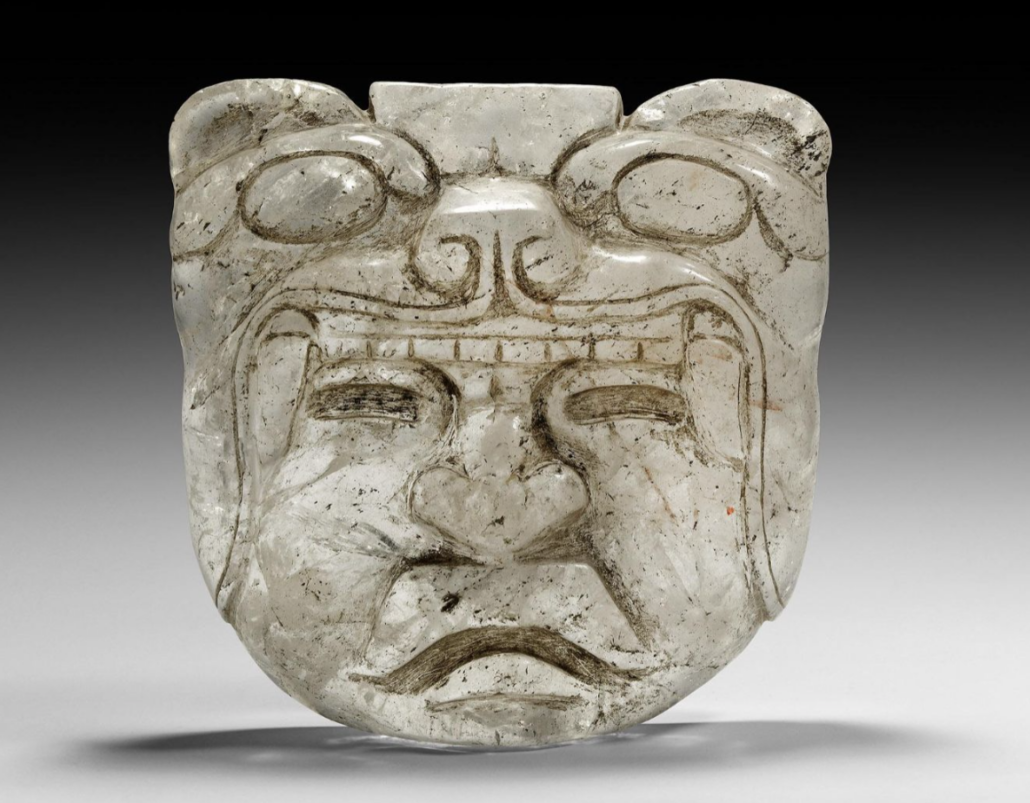
For the Olmec and most pre-Columbian peoples, masks were metaphorical, and funerary masks were important to the rituals that eased the deceased’s passage back to the spirit world. A pre-Classical period 12th-2nd century BCE mask in rock crystal, which brought $9,368 plus the buyer’s premium in February 2021 at TimeLine Auctions Ltd., has a distinctive headdress that forms the top half of its feline face. “The absence of fastening holes suggests that the item here originally functioned as a funerary mask, depicting the jaguar god, the most important deity of the Olmec world,” according to the catalog notes. Just as jade was often reserved for use with high-ranking class members, rock crystal was an uncommon material for use in masks, prized for its beauty and the artistic prowess it required to sculpt.
Long before the more-famous cultures of the Aztecs and the Mayan cultures thrived in central Mexico, the Olmecs laid the foundation with their traditions of stone working and their ideas about spirituality. Today, Olmec masks stand out not only as wonderful examples of pre-Columbian art but provide valuable insight into their culture and their religious traditions.


